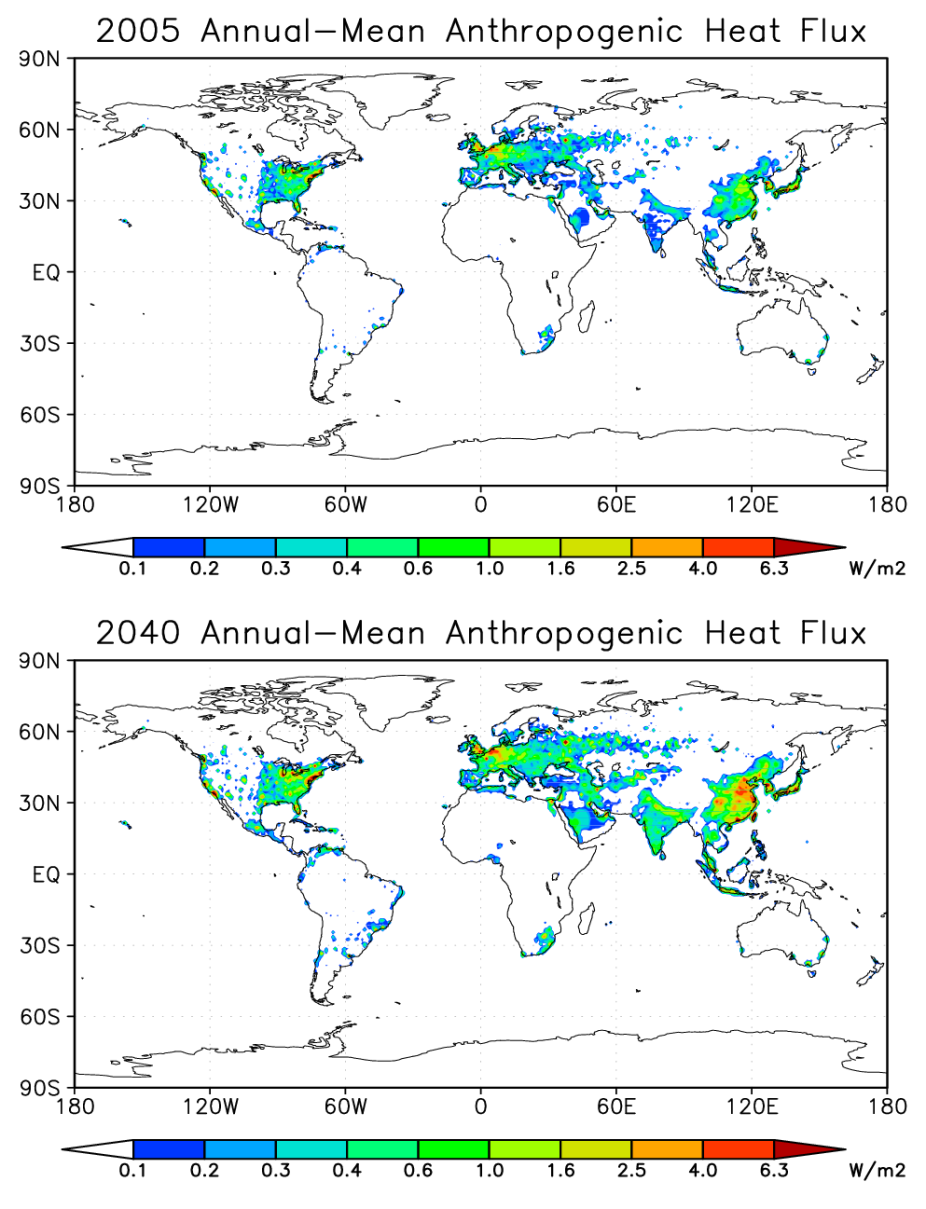Anthropogenic Heat Flux

Nearly all energy used for human economy is, at some point, dissipated thermally within Earth's atmosphere or land. This is a consequence of the second law of thermodynamics - the tendency of energy towards higher entropy (more disordered) forms. Because the energy we derive from non-renewable sources (coal, petroleum, natural gas, and nuclear) would not otherwise have been introduced to the Earth System as heat (on relevant timescales), it can be considered a climate forcing term. Globally, in 2005, this anthropogenic heat flux (AHF) was +0.028 W/m2, or only about 1% of the energy flux being added to Earth because of anthropogenic greenhouse gases. The spatial distribution of AHF, derived from national energy-use data and population density, is shown to the right. Although small globally, current AHF averaged over the continental United States and western Europe is, respectively, +0.39 and +0.68 W/m2, or up to 40% of the local forcing from carbon dioxide. A projection of 2040 AHF is shown in the bottom panel.
AHF data, at multiple spatial resolutions, is available here, and described in:
Flanner, M. G. (2009) Integrating anthropogenic heat flux with global climate models, Geophys. Res. Lett., 36, L02801, Doi: 10.1029/2008GL036465
* If you do not have AGU library access, use 23615034 for both login ID and password to access article
Some other relevant papers (among many) include:
- Chaisson, E. J. (2008), Long-term global heating from energy use, EOS Transactions, 89(28), 195, 253-254.
- Crutzen, P. J. (2004), New directions: The growing urban heat and pollution ”island” effect - impact on chemistry and climate, Atmos. Environ., 38, 3539–3540.
- Makar, P. A., S. Gravel, V. Chirkov, K. B. Strawbridge, F. Froude, J. Arnold, and J. Brook (2006), Heat flux, urban properties, and regional weather, Atmos. Environ., 40, 2750–2766.
- Oleson, K. W., G. B. Bonan, J. Feddema, M. Vertenstein, and C. S. B. Grimmond (2008), An urban parameterization for a global climate model. Part I: Formulation and evaluation of two cities, J. Appl. Meteor. and Climatology, 47, 1038–1060.
- Oleson, K. W., G. B. Bonan, J. Feddema, and M. Vertenstein (2008), An urban parameterization for a global climate model. Part II: Sensitivity to input parameters and the simulated urban heat island in offline simulations, J. Appl. Meteor. and Climatology, 47, 1061–1076.
- Sailor, D. J., and L. Lu (2004), A top-down methodology for developing diurnal and seasonal anthropogenic heating profiles for urban areas, Atmos. Environ., 38, 2737–2748.
- Washington, W. M. (1972), Numerical climatic-change experiments: The effect of man’s production of thermal energy, J. Appl. Meteor., 11, 768.